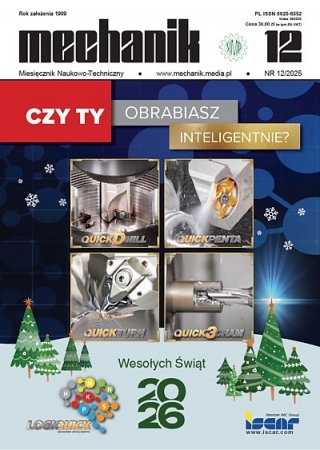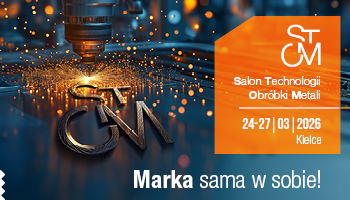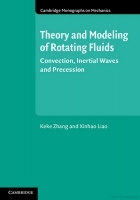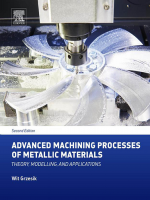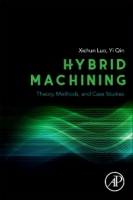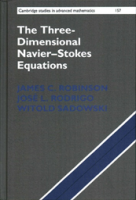Hybrydowe procesy obróbki ubytkowej. Definicje, zasady tworzenia i znaczenie w przemyśle *
Hybrid machining processes. Definitions, generation rules and real industrial importance
Author: Wit Grzesik
Mechanik nr 05/06/2018 - Obróbka - inne rodzaje
STRESZCZENIE: Przedstawiono trendy w rozwoju procesów obróbki ubytkowej w strategii Produkcja/Wytwarzanie 4.0. Podano zwięzłe charakterystyki konwencjonalnych i niekonwencjonalnych procesów obróbki ubytkowej oraz możliwości technologiczne ich integracji w bardziej wydajne procesy hybrydowe, wykorzystujące dwa (lub więcej) źródła energii albo różne mechanizmy usuwania naddatku obróbkowego. Wprowadzono nową terminologię dotyczącą hybrydyzacji procesów wytwórczych.
SŁOWA KLUCZOWE: obróbka hybrydowa, obróbka wspomagana, obróbka łączona, skrawanie konwencjonalne, skrawanie niekonwencjonalne
ABSTRACT: Some important trends in the development of advanced machining processes with potential applications in Production/Manufacturing 4.0 are presented. In general, both conventional and unconventional machining processes are characterized in terms of potential technological possibilities related to their hybridization allowing the performance of more productive and effective machining processes. This is due to the fact that hybrid processes considerably enhance the advantages of individual processes and minimize potential disadvantages in individual processes. Possible classification systems of hybrid processes including the CIRP terminology are overviewed and some representative examples are provided. In particular, the hybrid machining processes based on the simultaneous and controlled interaction of process mechanisms and/or energy sources leading to the synergic effect (1 + 1 = 3) on the process performance are taken into account. Some conclusions and future trends in the implementation of hybrid processes are outlined.
KEYWORDS: hybrid machining, assisted machining, mixed machining processes, conventional machining, unconventional machining
BIBLIOGRAFIA / BIBLIOGRAPHY:
- Grzesik W. „Wizje i strategie wytwarzania”, cz. I i II. Mechanik. 83, 3 (2010): s. 145–148 (cz. I). 83, 4 (2010): s. 232–239 (cz. II).
- Grzesik W. “Advanced Machining Processes of Metallic Materials”. Amsterdam: Elsevier, 2017.
- Grzesik W. „Podstawy skrawania materiałów konstrukcyjnych”. Warszawa: PWN, 2018.
- Gupta K., Jain N.K., Laubscher R.F. “Hybrid Machining Processes. Perspective on machining and finishing”. Heidelberg: Springer, 2016.
- El-Hofy H. A.-G. “Advanced Manufacturing Processes. Nontraditional and Hybrid Machining Processes”. New York: McGraw Hill, 2005.
- Roderburg A., Klocke F., Zeppenfield Ch. “Design methodology for hybrid production processes”. TRIZ Journal. April 2009. www.triz-journal.com/archives/2009/04/02/.
- Lauwers B., Klocke F., Klink A., Tekkaya A.E., Neugebauer R., Mc Intosh D. “Hybrid processes in manufacturing”. Annals of the CIRP Manufacturing Technology. 63, 2 (2014): s. 561–583.
- Zhu Z., Dhokia V.G., Nassehi A., Newman S.T. “A review of hybrid manufacturing processes”. International Journal of Computer Integrated Manufacturing. 26, 7 (2013): s. 596–615.
- Chu W.-S., Kim Ch.-S., Lee H.-T., Choi J.-O., Park J.-I., Song J.-H., Jang K.-H., Ahn S.-H. “Hybrid manufacturing in micro/nano scale: a review”. International Journal of Precision Engineering and Manufacturing-Green Technology. 1, 1 (2014): s. 75–92.
- Shrivastava P.K., Dubey A.K. “Electrical discharge machining-based hybrid machining processes: A review”. Proceedings of the Institution of Mechanical Engineers. Part B: Journal of Engineering Manufacture. 228, 6 (2013). DOI: 10.1177/0954405413508939.
- Ruszaj A., Skoczypiec S. „Wybrane zagadnienia obróbki elektrochemiczno-ściernej”. Mechanik. 87, 2 (2015): s. 103–105.
- Ruszaj A. „Obróbka elektrochemiczna – stan badań i kierunki rozwoju”. Mechanik. 90, 12 (2017): s. 1102–1109.
- Jawahir I.S., Attia H., Biermann D., Duflou J., Klocke F., Meyer D., Newman S.T., Pusavec F., Putz M., Rech J., Schulze V. “Cryogenic manufacturing processes”. Annals of the CIRP Manufacturing Technology. 65, 2 (2016): s. 713–736.
DOI: https://doi.org/10.17814/mechanik.2018.5-6.50
* Artykuł recenzowany




